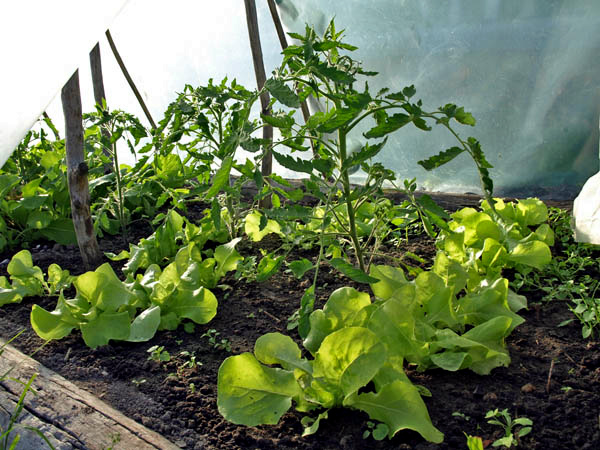What to plant after radish - what crops?
Content
Preparing the beds for re-sowing
This early vitamin vegetable is planted the very first on the site, they try to prepare the soil for it in advance, in the fall. The site is chosen flat, open so that the sun warms it as much as possible. The soil is fertilized with humus, compost, mineral fertilizers, ash or even lime is added, if it is necessary to deoxidize it, sand or peat is added. Such loose nutrient soil remains on the site after radishes, because in the short period that it grows and ripens, and this is from 20 to 40 days, it simply does not have time to deplete the land.
Having harvested the crop, the zealous owner immediately prepares the plot for other vegetables, because the plan must be thought out in advance in accordance with the laws of crop rotation and plant compatibility. An experienced gardener knows in the fall what he will sow or plant in this place in late May or early June (the ripening time of the selected radish variety is known).
Of course, radishes could be planted between other vegetables, such as cucumbers or tomatoes. In this case, harvesting it will simply give more space to the overgrowing vegetables, but it is rarely where tomatoes are planted so early. Most often, seedlings of tomatoes, peppers, eggplants can just be planted after harvesting our earliest vegetable.
After harvesting the root crops, the area must be cleaned of all plant residues, the roots of the weeds must be removed and destroyed, and well dug up.
If the soil initially does not differ in nutritional value and fertility, then fertilizers can be applied, for example, urea, compost. If the soil is fertile enough, then it is not worth fertilizing it again before sowing or planting something else, because in the month or a month and a half that the radish grew here, it did not even have time to deplete its horizon, and it is better to plant plants in its place with a different root system.
Having cleared and dug up the site, the owner usually levels it, water it, leaves it to rest for a while, even if for a very short time.
What can be planted after radish
Each crop depletes the soil in its own way - it selects certain nutrients from the level at which its roots are located. In addition, pests and pathogens of certain diseases settle in the upper layers of the soil, which target this particular culture, they try to gain a foothold for a long time, breed offspring, arrange it for the winter in the hope of feeding them the greens they like. That is why it is impossible to plant the same crop in the same place for several years in a row. The beauty of annual vegetables is, among other things, that you can easily change where they are grown. Moreover, close relatives cannot be seated next to or in one place in turn. Therefore, after harvesting radishes, Cruciferous (Cabbage), that is, radish or cabbage, are not planted on its garden. Actually, this implies crop rotation.
After the radish, tomatoes and eggplants are often planted. While the barely warmed earth grows root crops, gardeners grow seedlings of these vegetables, and it is time to plant it in the garden just in time for its release.Tomatoes and eggplants do not have common enemies with Cruciferous plants, moreover, the smell of tomatoes scares off the cruciferous fly, as well as some types of aphids, so they can be safely planted on the vacated prepared bed.
You can sow melons, peas or beans for the same reasons - the absence of common enemies, a different level of growth of the root system. Only the area for watermelons, melons, pumpkins is large, and radishes, as a rule, are given a small area.
Most often, after radishes, onions are sown on feathers or herbs - dill, parsley, some types of salad. Their growing season allows for this, and no pests or diseases of the previous culture will harm them.
Many gardeners plant cucumber seedlings on the vacated plots, and if the climate permits (in the south), then you can even sow them side by side (the so-called mixed sowing), cover with foil, and then, after harvesting the radish, there is just enough room for the cucumbers.
Special literature does not recommend planting carrots, but some gardeners practice mixed sowing, they say that both crops grow and develop normally. In general, planting root crops after radishes is risky, but you can plant, or rather, sow late varieties of beets ("Cylinder", "Crimson ball", "Cold-resistant-19") and carrots ("Moscow winter", "Losinoostrovskaya-13" , "Vitamin-6"). Experience has shown that they give a good harvest, many even note an improved taste, and then they are perfectly stored.
The most important thing is not to occupy the vacated areas with cabbage, rutabagas, radishes.
Video "Sowing radish after cabbage"
The author of this video demonstrates his experience of growing radishes in a greenhouse after harvesting cabbage.




